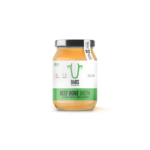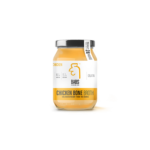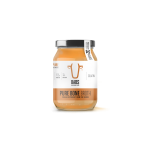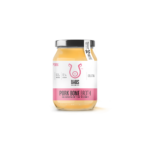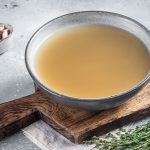If you’ve heard about the FODMAP diet and wondered if it was for you, this post is perfect for you. We explain what the FODMAP diet is, how it works, what you can eat, and who it was created for. Then, you can decide if the FODMAP diet is something you wish to pursue with your healthcare provider.
What is the FODMAP diet in a nutshell?
Put simply, a FODMAP diet is one that is low in certain types of sugars. These sugars can cause intestinal distress for some people, making life miserable to the point where it is challenging to go to work or attend social events. By limiting specific FODMAP sugars (see below), people on this diet can better control their gastric symptoms. They feel better and are more confident when going about their day-to-day lives again.
What is FODMAP – what is it short for?
FODMAP is an abbreviation for fermentable oligosaccharides, disaccharides, monosaccharides, and polyols. All of these short-chain carbohydrates (sugars, essentially) are less well absorbed in the small intestine. For some folks, this causes major gastric symptoms, while for others it’s barely noticeable.
The carbohydrates in FODMAP foods not only bring excess water into the digestive tract but are also poorly digested and cause unwanted gut fermentation. People who are bothered by FODMAP foods typically experience these symptoms:
- Cramping
- Constipation
- Diarrhea
- Feelings of bowel urgency
- Abdominal bloating
- Gas and flatulence (excessive wind passing)
Who is the FODMAP diet designed to help?
The FODMAP diet was created to help people who have a bad reaction to FODMAP foods. These are usually people who have irritable bowel syndrome (IBS) or small intestinal bacterial overgrowth (SIBO).
It may surprise you to learn that IBS is more prevalent than you might think. In fact, it’s the number one digestive disorder in the United States. About 60 percent of people with IBS are troubled by FODMAP foods in their diets. And people with SIBO already have an imbalance of bacteria in the digestive tract. So, the last thing they want is to eat food that causes more fermentation that can feed these bacteria or increase their floral load.
How does the FODMAP diet work?
The FODMAP diet in its entirety isn’t intended to be a long-term eating plan because it’s so restrictive. Instead, it’s a way to systematically discover which foods are bothering you so you can eliminate them from your diet or eat them only in very small quantities.
This diet can help to identify and deal with dietary issues before starting medication or other treatments for IBS or SIBO. In fact, in some cases, diet alone can resolve symptoms.
There are three essential steps to a FODMAP diet:
- Refrain from eating FODMAP foods (see list below).
- Carefully and gradually, reintroduce foods one at a time to see how your digestive system reacts to them.
- Limit or avoid any foods that you have identified as provoking unwanted symptoms.
The elimination portion of the FODMAP diet (step 1, above) typically lasts between two and six weeks.
Many people who commence a FODMAP diet do so at the recommendation of their doctor and work together with a registered dietician. This is to ensure you are avoiding all the necessary foods (you will receive a long, comprehensive list that includes the items in the next section), as well as to make certain you are getting adequate nutrition from the foods you do eat. A dietician can also help you decide when to add back certain foods to see if they are the culprits in your digestive problems.
You will be instructed to keep a food diary, recording everything you eat. You will also keep track of how you feel and if any digestive symptoms are present. This is especially important once you start adding back foods to test them for sensitivity.
Bone Broth for Runners and Triathletes: A Great Training Aid for Hard Workouts
Whether you’re training for your first 5K run or you’re a seasoned triathlete,...
Read MoreWhat is bone broth?
The methods for making bone broth today have been modernized for efficiency, sanitation,...
Read MoreWhat is gelatin?
Gelatin is a great source of nutrients that are widely beneficial to your...
Read MoreWhat is the FODMAP list?
FODMAP-rich food items
Foods high in FODMAP that are avoided at the start of the FODMAP diet include:
- Rye- and wheat-based foods, such as crackers, bread, pasta, and cereal
- Beans and lentils
- Lactose-containing milk, yogurt, ice cream, whipped cream, and many soft cheeses
- Certain fruits, including mangos, watermelon, cherries, apples, plums, nectarines, peaches, and pears
- Some vegetables, such as onions, garlic, cauliflower, mushrooms, asparagus, snow peas, and artichokes
- Many natural and artificial sweeteners such as agave nectar, honey, and high-fructose corn syrup, xylitol, sorbitol, mannitol, maltitol, and isomalt (found in sugar-free mints and chewing gum)
- Foods containing inulin, often added for fiber
Foods low in FODMAP
The foods you may eat on the FODMAP diet are:
- Meat and poultry
- Fish and seafood
- Eggs
- Tofu
- Rice, quinoa, corn, and oats
- Gluten-free pasta
- Some cheeses, including cheddar, feta, brie, and Camembert
- Almond milk
- Potatoes and cassava
- Nuts and seeds (small quantities only)
- Lactose-free dairy
- Vegetables such as tomatoes, cucumbers, zucchini, celery, bok choy, peppers, and eggplant
- Fruits such as pineapple, oranges, melon, kiwi, grapes, and berries
- Olive oil and coconut oil
- Many condiments and spices
You can sip on water and mint tea while on this diet. Although coffee and black tea are technically allowed, usually the caffeine in these beverages is already troublesome for people with IBS.
Bone broth is another excellent choice. Unlike many other beverages, bone broth is packed with nutrients, especially collagen; one of the body’s basic building blocks.
Not only can you drink bone broth, but you can also use it to flavor and add nutrition to your recipes, when making homemade soups or cooking rice, for example.
What are some FODMAP recipes for a pleasant diet?
When you take the time to do a FODMAP diet, you want to do it right. Otherwise, you might not get the most accurate results. It helps tremendously if you can prepare as many meals as possible from scratch. First, this eliminates accidentally eating FODMAP foods hidden in prepared items from the grocery store and saves you from endless label reading. Be aware that the more processed foods are, the more likely they are to contain FODMAP elements you are trying to avoid. Also, it lets you enjoy a cleaner, more nutritious diet.
As restrictive as the FODMAP diet can be, there are still tons of foods you can eat on this regimen. Some examples of FODMAP recipes are:
- Omelets and other egg dishes
- Overnight oats with berries and cinnamon
- Peanut butter on rice cakes
- Gluten-free pasta with bolognese sauce
- Chicken (or other meat) roasted with vegetables
- Bell peppers stuffed with ground turkey or quinoa
- Lettuce wraps
- Tuna or egg salad
- Stuffed baked potatoes
- Poached salmon
- Meatloaf
- Tofu stir fry
- Chicken vegetable soup (a great place to incorporate bone broth)
To make a delicious chicken vegetable soup, simply simmer leftover chicken (a wonderful way to use up leftovers from a roast) in chicken bone broth, along with whatever vegetables you’re allowed to have on your diet, such as carrots and celery. To give it more hardiness, you can add rice or diced potatoes. Season to taste with salt and pepper, and you’ve got a meal everyone in the household can enjoy, even if they’re not following the FODMAP diet with you.
What kind of experiences do people have with the FODMAP diet?
A large percentage of people have success with the FODMAP diet, so much so that it’s become the first line of diagnosis and treatment for many physicians who specialize in gastroenterology. Multiple studies have demonstrated that a low FODMAP diet can reduce stomach pain by 81 percent and bloating by 75 percent. It’s also been shown to lower incidents of flatulence, diarrhea, and constipation.
Sticking to the diet can be challenging, but knowing that there is a good chance of uncovering foods that make you feel bad can help you through the difficult days. There are many forums online today, where dieters can get support from other people with digestive disorders, recipes, and shopping tips. Also, the preponderance of online resources today is better than ever, so you can order foods like high-quality bone broth or organic seasonings, knowing you’re eating clean and not violating your diet rules.
Be sure to follow all the instructions from your healthcare provider or dietician carefully. Don’t jump the gun adding back FODMAP foods, and be sure to keep documenting your symptoms until the diet is done.
Is a FODMAP diet plan useful?
Clearly, the low FODMAP diet is very useful for folks with IBS, SIBO, and other digestive concerns. Once you know which foods trigger unwanted digestive symptoms, you can avoid eating them for a lifetime. Patients with IBS in clinical trials have said the FODMAP diet outcomes improve the quality of their life, especially if their disorder was restricting their work or social lives. If they can control symptoms with diet only, so much the better.
For physicians, the FODMAP diet is also essential. It lets them create a treatment plan for patients, knowing precisely what causes digestive upset. In some cases, this can also allow them to definitively diagnose IBS, assisting with everything from insurance coding to patient followup or referrals.
Whether or not the FODMAP diet is right for you, you may still wish to benefit from bone broth. BABS Bone Broth makes it easy for you to order online and have your choices delivered to you quickly at home. To learn more, check out our website today so you can see for yourself why so many people have turned to bone broth for their improved health.
This content is for informational and educational purposes only. It is not intended to provide medical advice or to take the place of such advice or treatment from a personal physician. All readers/viewers of this content are advised to consult their doctors or qualified health professionals regarding specific health questions. Neither Babs Bone Broth nor the publisher of this content takes responsibility for possible health consequences of any person or persons reading or following the information in this educational content. All viewers of this content, especially those taking prescription or over-the-counter medications, should consult their physicians before beginning any nutrition, supplement or lifestyle program.




